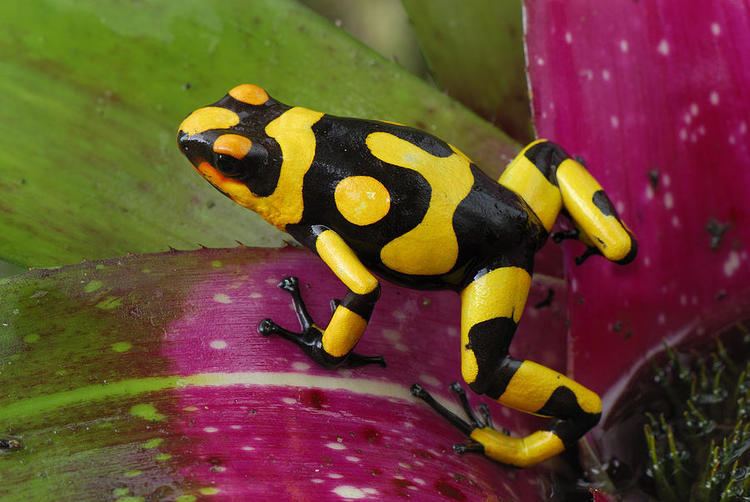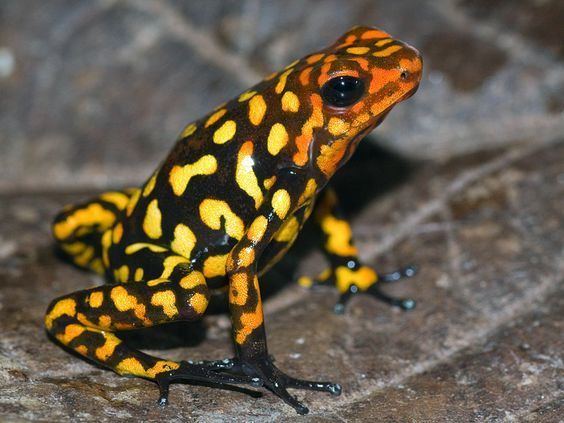Order Anura Higher classification Poison-dart Frogs | Phylum Chordata Family Dendrobatidae Scientific name Dendrobates histrionicus Rank Species | |
 | ||
Similar Poison dart frog, Frog, Oophaga, Amphibians, Poison‑dart Frogs | ||
The harlequin poison frog (or harlequin poison-dart frog), Oophaga histrionica, is a species of poison dart frog endemic to the El Chocó region of western Colombia. The frog is normally found on the ground of tropical rain forests, among fallen limbs or leaf litter.
Contents

Description

The harlequin poison frog has a variety of color morphs, which differ from one valley to the next in its native range. The base color is a bright orange, with a webbing of black over the entire body. Of the color morphs, the base color may be of clear to dull orange, yellow, red, white, or blue. The web pattern varies from small lines to big lines or speckled, incomplete lines, or a completely black frog with just a few spots. The various color morphs can be found in surprisingly close proximity, with different populations on adjacent hillsides. The Bilsa Biological Station (operated by the Jatun Sacha Foundation) boasts three color morphs—red, yellow, and orange—within their 3000-ha protected area located within Ecuador's Mache and Chindul coastal mountain ranges.
Life history

The harlequin poison frog lives on the forest floor. The male calls from a low perch to advertise his presence and the female lays eggs among the leaf litter. When the eggs hatch, a parent transports the newly hatched tadpoles to a tiny water reservoir (often in the axil of a bromeliad). The mother returns periodically and lays unfertilized eggs, on which the tadpoles feed until ready to metamorphose and exit the water. The larva is an obligate egg-feeder and will starve without this form of nutrition.
This rearing behavior makes harlequins among the most difficult poison dart frogs to raise in captivity. As a result, they are not widely found on the domestic pet market, and those available may be illegally smuggled imports rather than legally bred domestic animals. Wild-caught dart frogs are often stressed, require more care, have a much higher fatality rate, and may also be toxic and dangerous to handle. A few domestically bred animals are nevertheless available, and are highly sought-after in the pet trade.
Poison
O. histrionica, along with O. speciosa, produces cardiotoxins known as histrionicotoxins. These moderate to highly toxic compounds act as potent noncompetitive antagonists of nicotinic acetylcholine receptors, binding to a regulatory site on the delta subunit of the ion channel complex. They also have some affinity for sodium and potassium channels, although they are much less potent for these targets. The synthesis of histrionicotoxins and various homologues is synthetically challenging and has been the subject of many different attempts.
Status
The IUCN has listed this species as being of "Least Concern" because its range is large and it is a relatively common and adaptable species, able to live in disturbed habitats. Nevertheless, there is ongoing destruction of its rainforest habitat and its numbers seem to be declining but this seems to be at a level unlikely to be fast enough to justify listing it in a more threatened category.
